Grow Sweet Potatoes at Home – imagine harvesting a bounty of vibrant, earthy sweet potatoes right from your own backyard! Forget those bland, store-bought spuds; with a few simple tricks, you can cultivate the most delicious, nutrient-packed sweet potatoes you’ve ever tasted.
For centuries, sweet potatoes have been a staple in cultures around the globe, from the Americas to Asia, prized not only for their flavor but also for their incredible nutritional value. Did you know that sweet potatoes are packed with Vitamin A, Vitamin C, and fiber? They’re a powerhouse of goodness! But what if I told you that you don’t need acres of land to enjoy this amazing vegetable?
In today’s busy world, we’re all looking for ways to connect with nature and enjoy fresh, healthy food. That’s where this DIY guide comes in. Learning how to grow sweet potatoes at home is easier than you think, and it’s incredibly rewarding. Whether you have a sprawling garden or just a sunny balcony, I’m going to share some simple, effective techniques that will help you successfully cultivate your own sweet potato crop. Say goodbye to expensive grocery store runs and hello to fresh, homegrown goodness!
Ready to get your hands dirty? Let’s dive in and discover the secrets to growing sweet potatoes at home!
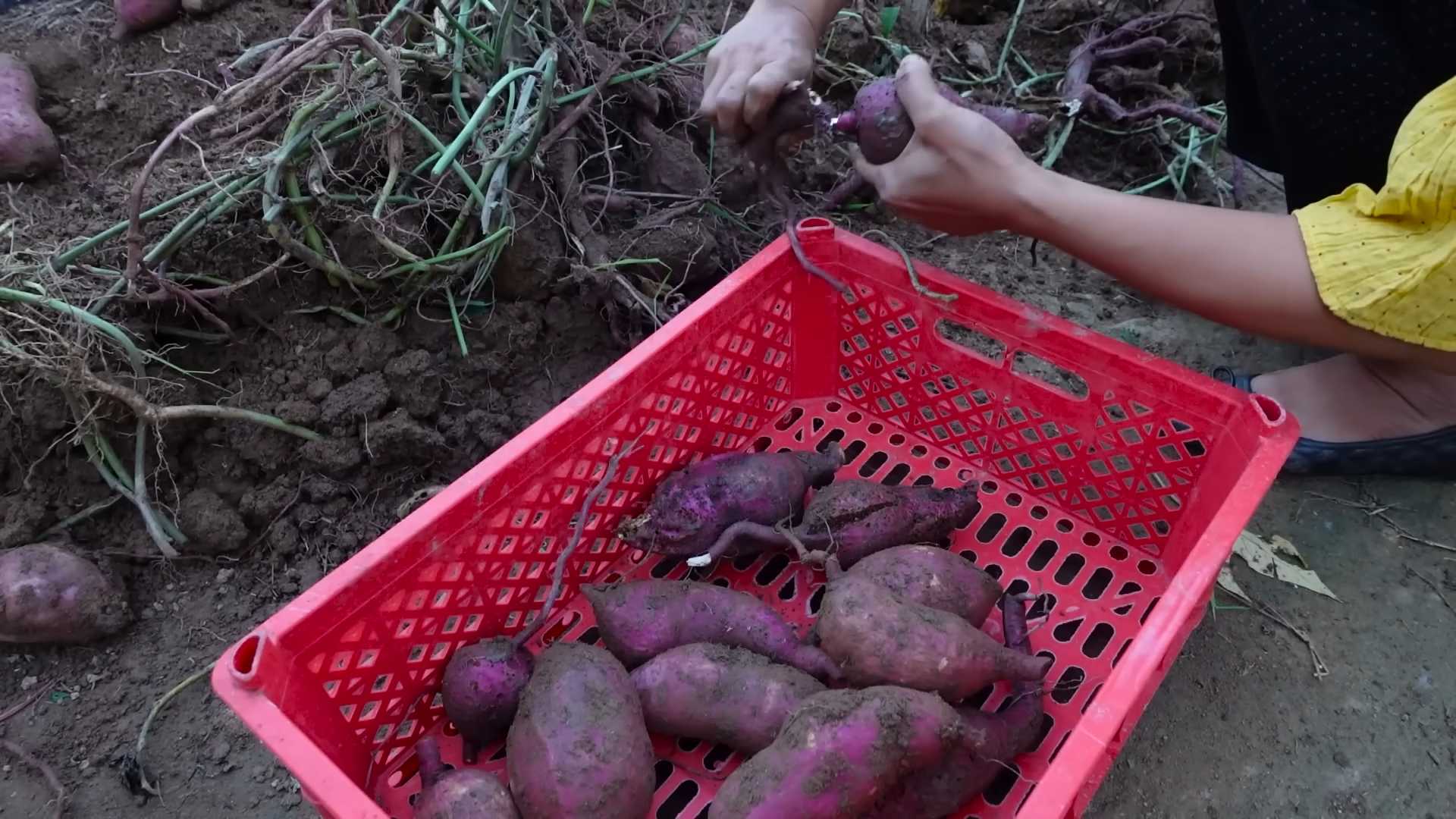
Grow Your Own Sweet Potatoes: A Beginner’s Guide
Hey there, fellow gardening enthusiasts! I’m so excited to share my experience with growing sweet potatoes at home. It’s surprisingly easy and incredibly rewarding. Imagine harvesting your own delicious, homegrown sweet potatoes – the taste is just unbeatable! This guide will walk you through every step, from sprouting slips to harvesting your bounty. Let’s get our hands dirty!
Getting Started: Sprouting Sweet Potato Slips
The first step in growing sweet potatoes isn’t planting the potato itself, but rather sprouting “slips.” These are the leafy shoots that grow from the sweet potato, and they’re what you’ll actually plant in the ground. Don’t worry, it’s easier than it sounds!
* What are Sweet Potato Slips? Slips are essentially baby sweet potato plants that sprout from the mature sweet potato. They look like leafy vines and are the key to propagating new plants.
* Why Grow Slips? Sweet potatoes are typically grown from slips because planting the whole potato directly can lead to rot and inconsistent results. Slips give you a much higher success rate.
* Timing is Key: Start sprouting your slips about 8-10 weeks before the last expected frost in your area. This will give them plenty of time to develop before planting season.
Step-by-Step Instructions for Sprouting Slips:
1. Choose Your Sweet Potato: Select a healthy, organic sweet potato from your local grocery store or farmer’s market. Organic is important to avoid any growth inhibitors that might have been used. I prefer using a variety I know I like to eat!
2. Prepare the Potato: Thoroughly wash the sweet potato to remove any dirt or debris.
3. The Water Method: This is my preferred method. Grab a glass jar or container that’s wide enough to hold the sweet potato. Insert toothpicks around the middle of the sweet potato, spacing them evenly. These toothpicks will act as supports, allowing the bottom half of the potato to sit in water while the top half remains dry.
4. Fill with Water: Fill the jar with water, ensuring that the bottom half of the sweet potato is submerged.
5. Location, Location, Location: Place the jar in a warm, sunny location. A windowsill that receives plenty of sunlight is ideal.
6. Maintain the Water Level: Check the water level regularly and add more as needed to keep the bottom half of the sweet potato submerged.
7. Patience is a Virtue: Within a few weeks, you should start to see sprouts emerging from the sweet potato. Be patient; it can sometimes take longer depending on the variety and environmental conditions.
8. The Soil Method (Alternative): If you prefer, you can also sprout slips in soil. Bury the sweet potato horizontally in a container filled with moist potting mix, leaving the top slightly exposed. Keep the soil consistently moist and place the container in a warm, sunny location.
9. Harvesting the Slips: Once the slips are about 6-8 inches long, they’re ready to be harvested. Gently twist or cut them off the sweet potato, being careful not to damage the remaining sprouts.
10. Rooting the Slips: Place the harvested slips in a glass of water, ensuring that the bottom inch or two is submerged. Within a few days, roots should start to develop. Change the water every day or two to keep it fresh.
Preparing Your Garden Bed
Now that your slips are happily rooting, it’s time to prepare your garden bed for planting. Sweet potatoes need plenty of space and well-drained soil to thrive.
* Sunlight is Essential: Sweet potatoes need at least 6-8 hours of direct sunlight per day. Choose a location in your garden that receives ample sunlight.
* Soil Matters: Sweet potatoes prefer well-drained, sandy loam soil. Heavy clay soil can lead to stunted growth and misshapen potatoes.
* Soil Testing: Ideally, you should test your soil to determine its pH and nutrient levels. Sweet potatoes prefer a slightly acidic soil pH of around 6.0-6.5.
* Amending the Soil: If your soil is heavy or lacking in nutrients, amend it with compost, well-rotted manure, or other organic matter. This will improve drainage, aeration, and fertility.
Step-by-Step Instructions for Preparing Your Garden Bed:
1. Clear the Area: Remove any weeds, rocks, or debris from the planting area.
2. Till or Dig: Till the soil to a depth of at least 12 inches to loosen it up. If you don’t have a tiller, you can use a garden fork or shovel to dig and turn the soil.
3. Amend the Soil: Spread a 2-3 inch layer of compost or well-rotted manure over the planting area.
4. Incorporate the Amendments: Use a tiller or garden fork to incorporate the compost or manure into the soil.
5. Create Ridges or Hills: Sweet potatoes grow best when planted on ridges or hills. This improves drainage and allows the potatoes to develop more easily. Create ridges that are about 8-10 inches high and 12-18 inches wide. Space the ridges about 3-4 feet apart.
6. Water the Soil: Water the soil thoroughly to settle it and provide moisture for the newly planted slips.
Planting Your Sweet Potato Slips
With your garden bed prepped and your slips rooted, it’s time to get planting! This is where the magic really happens.
* Timing is Crucial: Plant your sweet potato slips after the last expected frost and when the soil has warmed to at least 60°F (15°C).
* Spacing is Important: Space the slips about 12-18 inches apart along the ridges or hills.
* Handle with Care: Sweet potato slips are delicate, so handle them gently during planting.
Step-by-Step Instructions for Planting Your Slips:
1. Dig a Hole: Dig a small hole in the top of the ridge or hill, deep enough to accommodate the roots of the slip.
2. Plant the Slip: Gently place the slip in the hole, ensuring that the roots are spread out.
3. Cover the Roots: Cover the roots with soil and gently firm the soil around the base of the slip.
4. Water Thoroughly: Water the newly planted slip thoroughly to help it establish roots.
5. Protect from Pests: If you’re concerned about pests, you can cover the newly planted slips with row covers or netting.
6. Repeat: Repeat steps 1-5 for each slip, spacing them 12-18 inches apart.
Caring for Your Sweet Potato Plants
Once your sweet potato plants are in the ground, they’ll need regular care to thrive. This includes watering, weeding, and fertilizing.
* Watering: Water your sweet potato plants regularly, especially during dry periods. Aim to keep the soil consistently moist, but not waterlogged.
* Weeding: Keep the garden bed free of weeds, as they can compete with the sweet potato plants for nutrients and water.
* Fertilizing: Sweet potatoes are not heavy feeders, but they will benefit from a light application of fertilizer. Use a balanced fertilizer or one that is slightly higher in phosphorus and potassium.
* Vine Management: Sweet potato vines can spread quite a bit, so you may need to prune them back to keep them from taking over your garden. You can also train the vines to grow along a trellis or fence.
Step-by-Step Instructions for Caring for Your Plants:
1. Water Regularly: Water your sweet potato plants deeply once or twice a week, depending on the weather.
2. Weed Regularly: Remove any weeds that emerge in the garden bed.
3. Fertilize Lightly: Apply a light application of fertilizer about 4-6 weeks after planting. Follow the instructions on the fertilizer package.
4. Monitor for Pests and Diseases: Keep an eye out for any signs of pests or diseases. Common pests of sweet potatoes include sweet potato weevils and flea beetles. Common diseases include stem rot and black rot.
5. Prune Vines (Optional): If the vines are becoming too unruly, you can prune them back to keep them under control.
6. Hilling: As the sweet potatoes grow, you can hill up the soil around the base of the plants. This will help to protect the developing potatoes from sunlight and pests.
Harvesting Your Sweet Potatoes
The moment you’ve been waiting for! Harvesting your own sweet potatoes is a truly rewarding experience.
* Timing is Everything: Sweet potatoes are typically ready to harvest about 90-120 days after planting.
* Signs of Maturity: The leaves of the sweet potato plants will start to turn yellow and
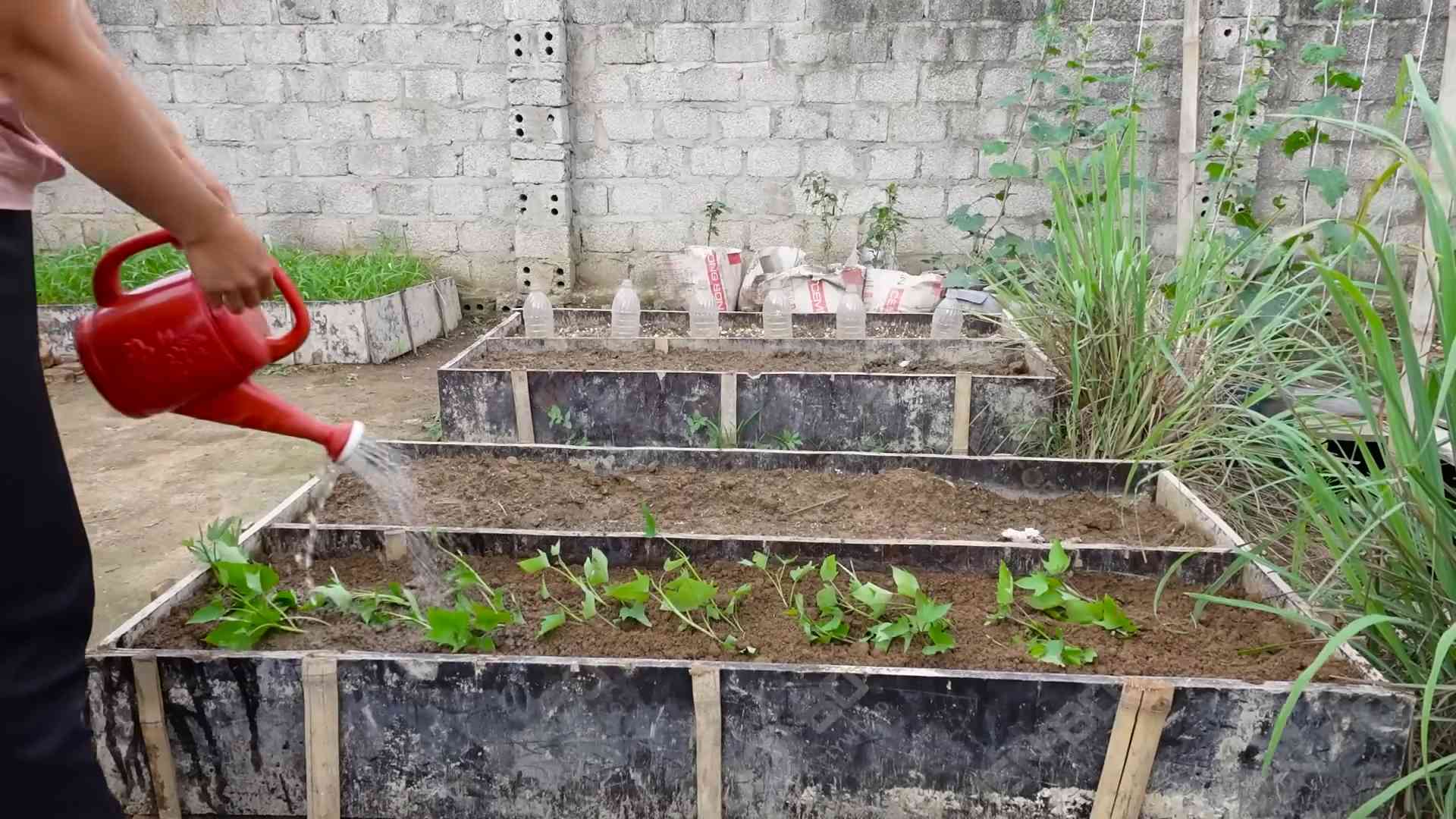
Conclusion
So, there you have it! Growing sweet potatoes at home is not only achievable, but it’s also a deeply rewarding experience. Forget those bland, store-bought sweet potatoes – imagine biting into a vibrant, flavorful sweet potato that you nurtured from sprout to harvest. This DIY trick, transforming a single sweet potato into a bounty of slips and eventually a garden full of delicious tubers, is a game-changer for any home gardener, regardless of experience level.
Why is this a must-try? Because it offers a level of control and satisfaction you simply can’t get from purchasing produce. You know exactly where your food comes from, what (or rather, what *didn’t*) go into growing it, and you get the immense pleasure of watching life unfold right before your eyes. Plus, it’s incredibly cost-effective. One sweet potato from the grocery store can potentially yield dozens of new sweet potatoes, making it a sustainable and budget-friendly way to add a nutritious staple to your diet.
Beyond the basic method, there are so many ways to personalize your sweet potato growing journey. Experiment with different varieties of sweet potatoes to discover your favorite flavor profiles. Beauregard, Jewel, and Japanese sweet potatoes all offer unique tastes and textures. You can also explore different growing mediums. While water works perfectly well for sprouting, you might try using a soilless mix like perlite or vermiculite for a slightly different approach. Consider adding a diluted liquid fertilizer to the water or growing medium once the slips have developed roots to give them an extra boost.
For those with limited space, growing sweet potatoes in containers is a fantastic option. Choose a large container (at least 10 gallons) and ensure it has excellent drainage. You can even train the vines to grow up a trellis or fence, maximizing vertical space. Remember to provide consistent watering and plenty of sunlight for optimal growth.
Don’t be intimidated by the process. It’s surprisingly simple, and even if you encounter a few hiccups along the way, the learning experience is invaluable. The key is patience and observation. Watch your sweet potato closely, adjust your approach as needed, and celebrate the small victories along the way.
We wholeheartedly encourage you to give this DIY trick a try. It’s a fantastic way to connect with nature, learn about the life cycle of plants, and enjoy the unparalleled taste of homegrown sweet potatoes. Once you’ve harvested your first crop, we’d love to hear about your experience! Share your photos, tips, and stories in the comments below. Let’s build a community of home gardeners who are passionate about growing their own food and sharing their knowledge with others. Let us know what variety of grow sweet potatoes at home you tried and how it worked out for you. Happy growing!
Frequently Asked Questions (FAQ)
Q: What kind of sweet potato should I use for sprouting?
A: You can use any variety of sweet potato you find at the grocery store or farmers market. However, organic sweet potatoes are generally recommended, as they are less likely to have been treated with sprout inhibitors. If you’re unsure, opt for a sweet potato that looks healthy and firm, with no signs of rot or damage. Beauregard and Jewel varieties are popular and readily available. Experimenting with different varieties can be fun!
Q: How long does it take for sweet potato slips to grow?
A: The time it takes for slips to develop varies depending on factors such as temperature, humidity, and the variety of sweet potato. Generally, you can expect to see slips emerging within 2-4 weeks. Be patient and ensure the sweet potato is kept in a warm, well-lit location. Change the water regularly to prevent mold growth.
Q: When is the best time to plant sweet potato slips outdoors?
A: The ideal time to plant sweet potato slips outdoors is after the last frost, when the soil has warmed to at least 65°F (18°C). Sweet potatoes thrive in warm weather, so waiting until the soil is consistently warm will give them the best chance of success. In most regions, this is typically late spring or early summer.
Q: How much sunlight do sweet potatoes need?
A: Sweet potatoes need at least 6-8 hours of direct sunlight per day to thrive. Choose a planting location that receives plenty of sunlight throughout the day. If you’re growing sweet potatoes in containers, make sure to place them in a sunny spot. Insufficient sunlight can result in smaller yields and less flavorful sweet potatoes.
Q: What kind of soil is best for growing sweet potatoes?
A: Sweet potatoes prefer well-drained, sandy loam soil that is rich in organic matter. Avoid heavy clay soils, as they can become waterlogged and hinder root development. Amend your soil with compost or other organic matter to improve drainage and fertility. A slightly acidic soil pH (around 6.0-6.5) is ideal.
Q: How often should I water sweet potatoes?
A: Water sweet potatoes regularly, especially during dry periods. Keep the soil consistently moist, but avoid overwatering, which can lead to root rot. Water deeply and less frequently, rather than shallowly and more often. Mulching around the plants can help retain moisture and suppress weeds.
Q: How do I know when my sweet potatoes are ready to harvest?
A: Sweet potatoes are typically ready to harvest about 90-120 days after planting the slips. The leaves will start to turn yellow and the vines may begin to die back. To check for maturity, carefully dig around one of the plants and feel the size of the potatoes. If they are a good size and the skin is firm, they are ready to harvest.
Q: How do I cure sweet potatoes after harvesting?
A: Curing sweet potatoes is essential for improving their flavor and storage life. After harvesting, gently brush off any excess soil and allow the sweet potatoes to dry in a warm, humid place (80-85°F or 27-29°C) for about 7-10 days. This process allows the skins to harden and any minor cuts or bruises to heal. After curing, store the sweet potatoes in a cool, dry, and well-ventilated location (55-60°F or 13-16°C).
Q: Can I grow sweet potatoes in containers?
A: Yes, sweet potatoes can be successfully grown in containers. Choose a large container (at least 10 gallons) with good drainage. Fill the container with a well-draining potting mix and plant the slips. Provide plenty of sunlight and water regularly. You may need to fertilize the plants more frequently when growing in containers.
Q: Are sweet potato leaves edible?
A: Yes, sweet potato leaves are edible and nutritious. They can be cooked and eaten like spinach or other leafy greens. Harvest young, tender leaves for the best flavor. Sweet potato leaves are a good source of vitamins, minerals, and antioxidants.
Q: My sweet potato slips are growing roots in the water. Should I plant them directly in the garden?
A: Yes, once your sweet potato slips have developed a good root system (around 2-3 inches long), they are ready to be planted in the garden. Gently remove the slips from the sweet potato and plant them in well-prepared soil. Water them thoroughly after planting.
Q: Can I reuse the same sweet potato to grow more slips?
A: Yes, you can often get multiple rounds of slips from the same sweet potato. After harvesting the first set of slips, you can place the sweet potato back in water or soil and wait for more slips to emerge. However, the subsequent rounds of slips may be less vigorous than the first.
Q: What are some common pests and diseases that affect sweet potatoes?
A: Some common pests that can affect sweet potatoes include sweet potato weevils, flea beetles, and aphids. Diseases include fungal diseases like stem rot and black rot. Practice good garden hygiene, such as removing weeds and debris, to help prevent pest and disease problems. Use organic pest control methods if necessary.
Q: How do I store sweet potatoes after curing?
A: After curing, store sweet potatoes in a cool, dry, and well-ventilated location (55-60°F or 13-16°C). Avoid storing them in the refrigerator, as this can cause them to develop a hard core and lose flavor. Properly cured and stored sweet potatoes can last for several months.
Q: Can I grow sweet potatoes indoors year-round?
A: While it’s possible to start sweet potato slips indoors, growing them to full maturity indoors can be challenging due to the space and sunlight requirements. You can start the slips indoors and then transplant them outdoors when the weather is warm enough. If you have a greenhouse or a very sunny indoor space, you might be able to grow them indoors year-round, but it will require careful attention to lighting, watering, and fertilization.

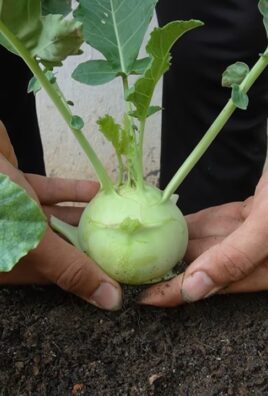
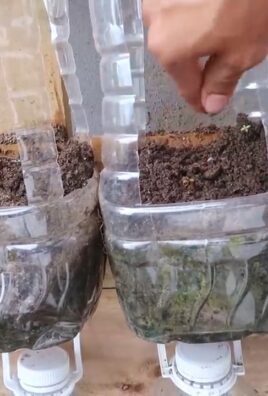
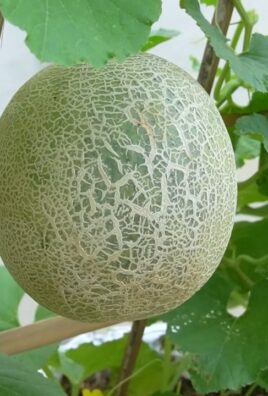
Leave a Comment